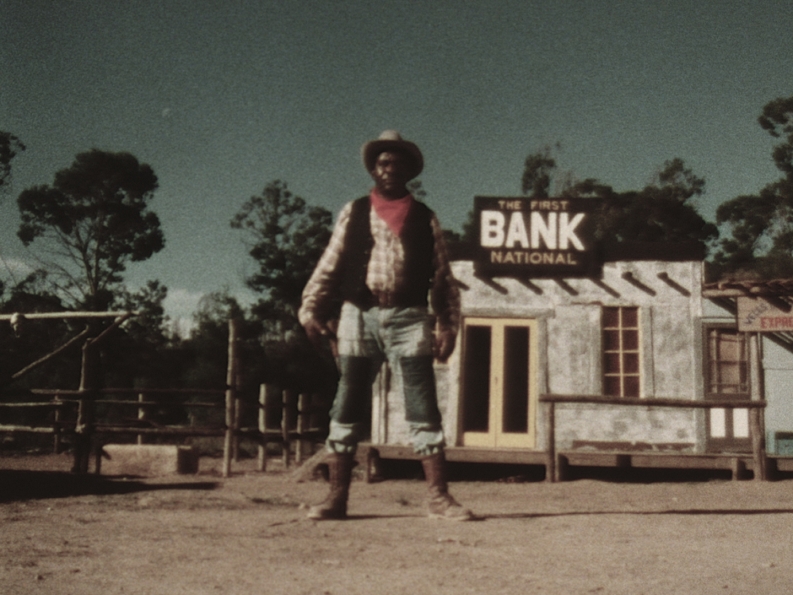Umbango Film Difficulty Ranking: 2
The framing is off, the characters are melodramatic, and the dialogue is cheesy at best. Welcome to the South African B-movie Umbango. It’s one of hundreds of films produced at the height of the apartheid for African audiences. By the early 1990s most of these films had disappeared, but luckily for you, Umbango is one of a few that have been recovered.

Why Watch Umbango?
- To see an authentic Zulu film (not counting that Michael Caine film)
- It’s a classic B-movie – perfect to laugh at
- Find out what kind of films were made under the apartheid
- For an alternative to the polished South African films such as Tsotsi or District 9
The Breakdown
The opening introduces us to Kay Kay, a bandit chilling by a camp fire out in the wild. Another traveler joins him by the fire and pledges his loyalty to Kay Kay. They fulfill the typical bad-guy and silly side-kick role.
There are two things you’ll notice in this film:
- The production quality is pretty terrible. The camera framing is all over the place, the colour contrasts are often completely washed out, and the sets are obviously fake. You have to accept that this is a B-movie to enjoy the little things.
- The humour is very different to what you’re used to. It seems to be parodying the western genre as well as some South Africans (although I cannot confirm this). The characters also find calling their enemy ‘smelly’ hilarious. There’s a scene where the bad guy calls his nemesis ‘smelly like a jackal’ and ‘smelly as a skunk’ as if it’s the funniest thing in the world.
As long as you accept the poor production quality and can laugh at the strange humour, you’re in for a treat.
Conclusion
Watch Umbango to get an idea of what films were made for South African audiences under the apartheid. Whilst it is obviously a B-movie, it is still a lot of fun to watch!


You must be logged in to post a comment.